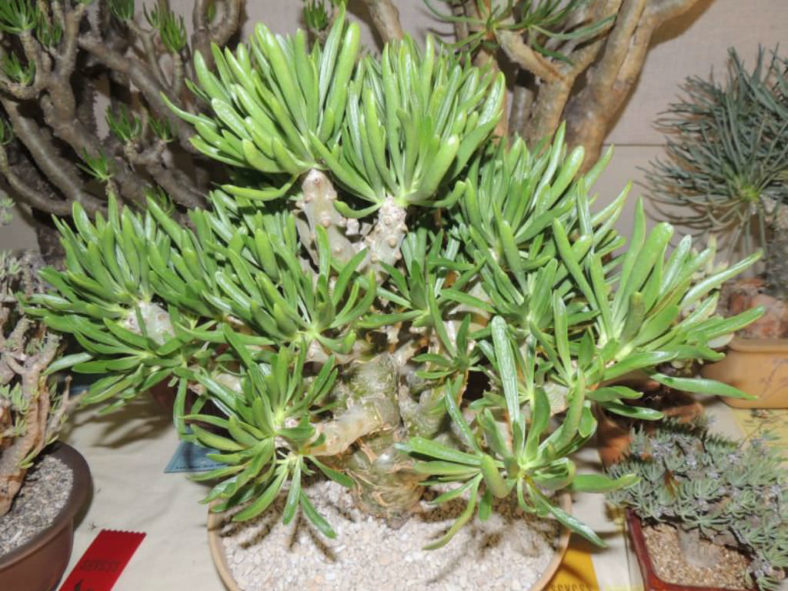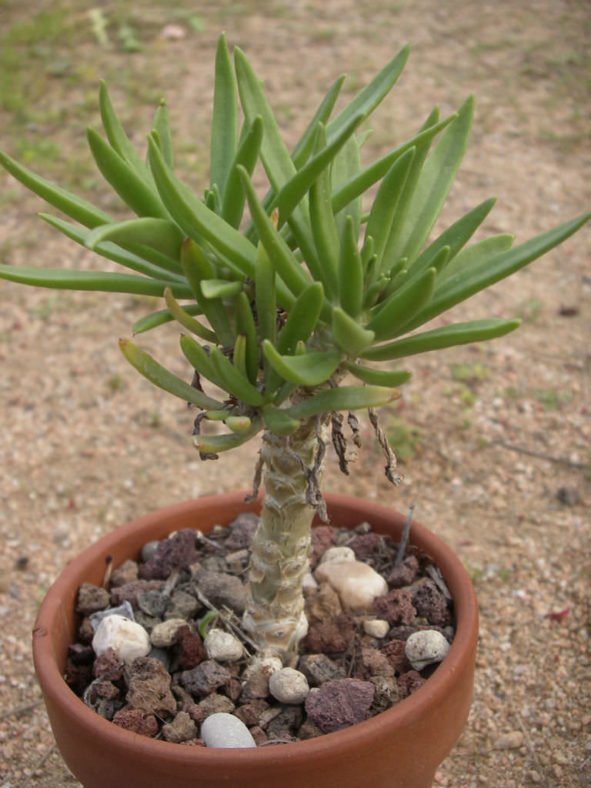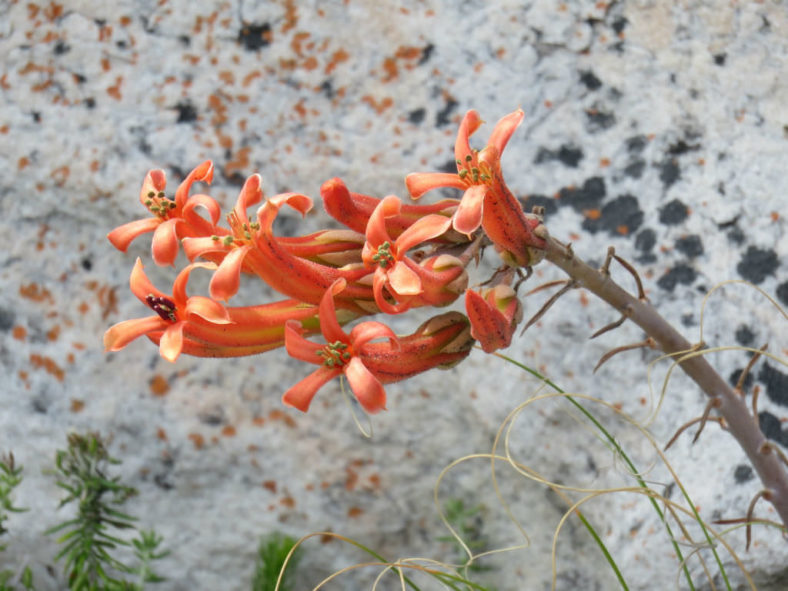Scientific Name
Tylecodon grandiflorus (Burm.f.) Toelken
Common Name(s)
Dwarf Butter Tree
Synonym(s)
Cotyledon curviflora, Cotyledon grandiflora, Cotyledon purpurea, Cotyledon tuberculosa, Umbilicus tuberculosus
Scientific Classification
Family: Crassulaceae
Subfamily: Kalanchoideae
Genus: Tylecodon
Etymology
The specific epithet "grandiflorus" (pronounced gran-dih-FLOR-us)" means "having large flowers" and refers to the flowers of this species that are the largest in the genus.
Origin
Tylecodon grandiflorus is native to South Africa (Northern Cape and Western Cape).
Description
Tylecodon grandiflorus is a low-growing succulent with a thick, irregularly shaped stem and a few decumbent branches that can grow up to 20 inches (50 cm) long. The main stem and branches have grey to yellowish peeling bark. The leaves are green to brownish green, linear-elliptic to linear-oblanceolate with grooved to channeled upper surface, and can measure up to 3.2 inches (8 cm) long and 0.6 inches (1.5 cm) wide.
The orange-red, tubular flowers appear in late summer after the plant loses its leaves. They can reach a length of 1.6 inches (4 cm).

How to Grow and Care for Tylecodon grandiflorus
Soil: A well-draining soil mix is the key to healthy Tylecodon. Poor drainage and overwatering most commonly cause root rot in both indoor and outdoor plants.
Light: Tylecodons can survive direct sunlight exposure without problems, but they will grow beautifully in shadow.
Hardiness: Tylecodon grandiflorus can withstand temperatures as low as 30 to 50 °F (-1.1 to 10 °C), USDA hardiness zones 10a to 11b.
Watering: As winter is the growing season, Tylecodons require careful watering from winter until the spring. Get the soil wet, and then wait until it is dry before watering again. In the summer, reduce watering to once per month.
Fertilizing: Use liquid fertilizer for cacti and other succulents in winter.
Repotting: You do not need to repot these plants often. You can do it when the container becomes too small or shallow.
Propagation: Tylecodons can be cultivated either by seed or by cuttings.
Learn more at How to Grow and Care for Tylecodon.
Toxicity of Tylecodon grandiflorus
Tylecodon species are adapted to avoid animal predation being poisonous. Therefore, keep them away from children, pets, and livestock.
Links
- Back to genus Tylecodon
- Succupedia: Browse succulents by Scientific Name, Common Name, Genus, Family, USDA Hardiness Zone, Origin, or cacti by Genus
Photo Gallery
Click on a photo to see a larger version.


